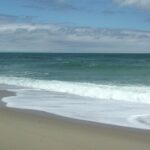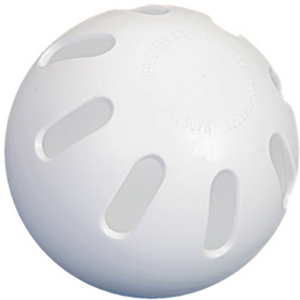Winter sea kayaking came into vogue several seven years ago in New England when a couple dozen local Massachusetts paddlers bought drysuits and discovered that they could buy at local sporting good stores neoprene gloves just as warm as anything they could buy for three times as much on mail order. Temperatures were frigid, as usual: spates that rarely rose above 20 F, nights in the low teens. The North Atlantic had twisted its way through another thermal inversion and drew just enough heat from the sun to hold water temps in the low 30’s.
A half dozen of us set out one morning from Manchester, Massachusetts to try winter paddling for the first time. I pulled on a polypro undershirt and wool sweater, put on my neoprene drysuit, and hoisted from the roof of my car the kayak I’d built [SDT LINK], an okume stitch-and-glue whose deck I hadn’t outfitted with decklines [SDT LINK] and toggles.
There’s plenty to remark when paddling the winter ocean. The water achieves an clarity once the thermocline tumbles through its inversion. The pelagic water column loses its biotic turbidity. You can see through the clear waters nearshore ledges and shelves, and no other boats touch the water save the occasional anchored commercial fishing boat [NAKF link], urchin diver breathing air piped down from the pilothouse.
We launched and paddled out over the rock reefs leading towards Magnolia and Gloucester. The swell was large, heavy and smooth, the bulky missives of a storm a hundred miles offshore. The day cloudless, temps sharp enough to plant chilblains in my fingers in the few moments minutes it took to unclip my kayak from the roof. Other than the temperature, though – about 18 F – nothing new but that this was the first time I’d been on the winter ocean.
I felt good in my boat, a round-bottomed 17-footer whose hull required little effort to propel it forward. I’ve always enjoyed clear winter mornings when the sun is out, and I as I adjusted my hood to keep warm – off when I grew too warm, on when I chilled – I felt eve more comfortable as my neoprene half facemask began to insulate my mouth and nose.
At a deep nook along the coast where Cape Ann slants out towards underwater ledges, the lead paddler in our group scooted towards an enormous boulder field in which lay a narrow, deep chute.
We watched Bob as he pivoted his boat shoreward. Glancing back at an incoming roller, he threw several hard strokes, and began to speed forward as the wave rose. The wave’s suckback drew down the water in the chute as Bob’s kayak jetted forward.
It was a sweet-looking move; as the wave crested and broke, forming a white pillow, Bob shot in between the boulders and out through the chute, emerging on the other side a heavy tumult of whitewater swirl.
Now another in the group. He lined up as Bob before, launched on a wave whose runout proved very rough and heaving and not the least smooth. As careened through the chute at a cockeyed angle, he capsized, and when the breaking wave spat him out we could see that he was separated from his boat.
A third paddler sped in for rescue, only to get caught by the next wave’s curl. As he sidesurfed in through the chute, he capsized too.
Now a fourth paddler bolted forward. A third wave caught his stern and pivoted the boat. He began to side-surf through the chute and, bracing, nearly bowling-alleyed the paddlers in the water as they dove below the surface.
“Use a THROW BAG!” someone shouted.
As a group we had:
No throw bags.
No towlines. [BULLDOG LINK]
No radios [SDT LINK].
No helmets. [Brad Gwynn SDT LINK]
Meanwhile my kayak, true to wooden-kayak builder’s puffed-up sense of the beauty of wood, had no decklines [SDT LINK], lest anything obscure the visibility of a few millimeters of varnish. Were I to paddle in and help, the paddlers in the water would have nothing to grasp if I draw stroked alongside to help them back in their boats.
I floated with the others in a shocked semi-circle outside the break zone.
Here’s how the story finally panned out: the three guys in the water managed to rescue one another by way of laborious swim-and-kick rescues: as one paddler floated and kicked, grasping his stern, he held his rescuer’s bow as his rescuer stutter-paddled both of them clear of the break zone. Luckily the wave-set had by then completed its furious cycle of boomers.
Here’s how the story should have started:
Aside from our drysuits, all should have been wearing helmets in the chute.
Each of us should have been wearing a tow belt.
Each of us should have been carrying a contact tow.
At least two of us should have been carrying VHF [SDT LINK]radios had we needed make a call for help.
Winter paddling is worthwhile, not only because it lengthens the paddling season beyond the summer solstice but because it adds to any small group cohesion and interdependence.
Just be sure, though, that your group is properly equipped with the hardware you need to deal with roughwater rescues in surf, where one paddler rushing to aid another can sometimes render a not-bad situation worse.
Had we long tow belts and throw bags, getting that first paddler out of the surf zone would have been simple. Floating outside the breaking waves and heaving a tow rope, a rescuer could have aided the capsized paddler simply by hoving to and backing out, pulling empty kayak via a distant tow. Moreover, had matters gone from bad to worse – he first capsized paddler dislocating a shoulder say, or, worse, going into cold shock or getting knocked out – we could have resorted to a VHF channel 16 distress call [SDT LINK].
Now that’s group cohesion.




